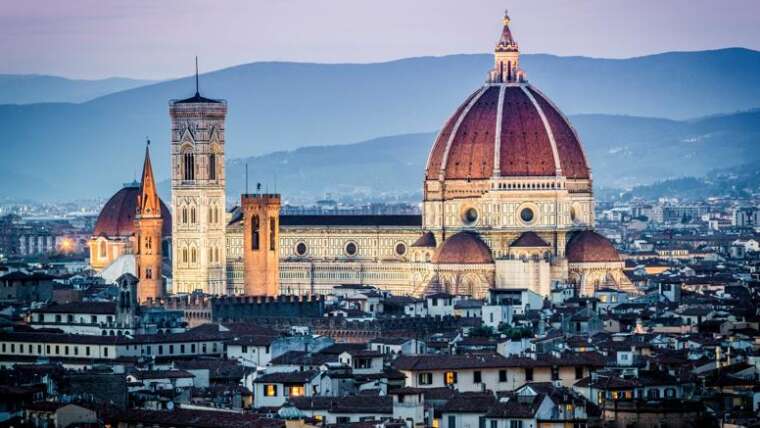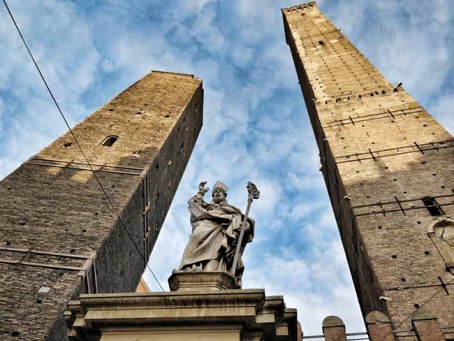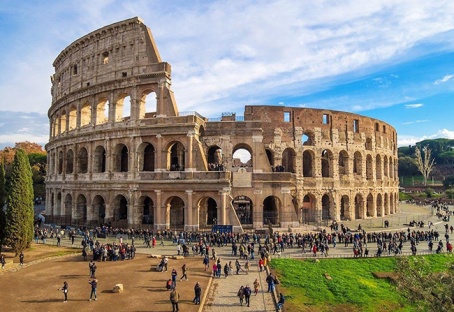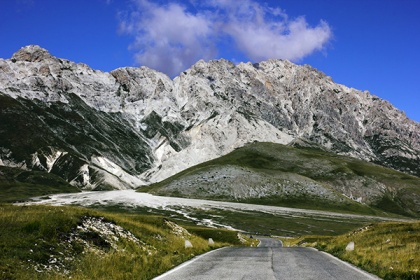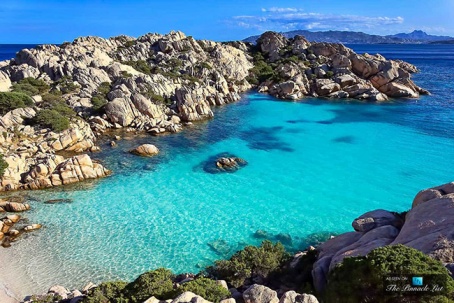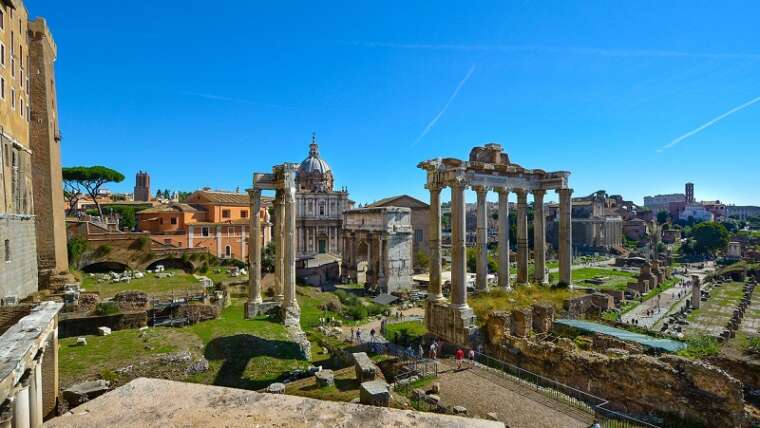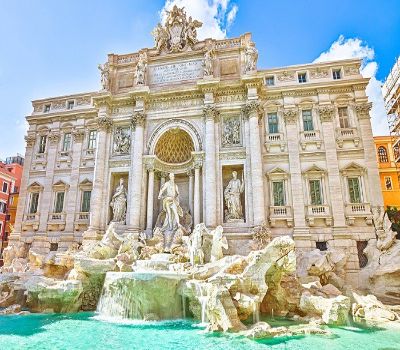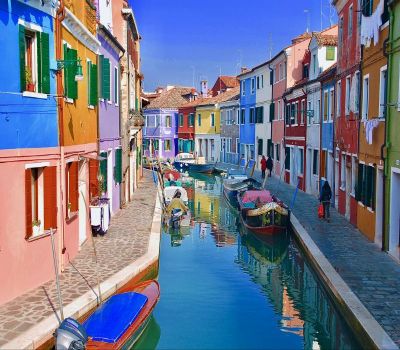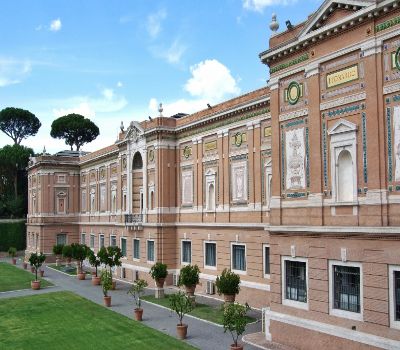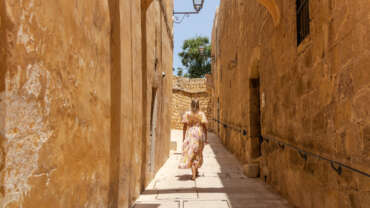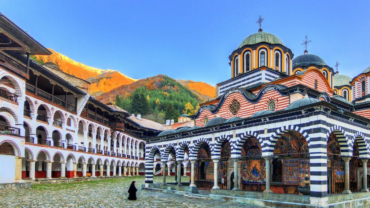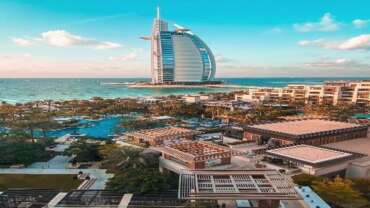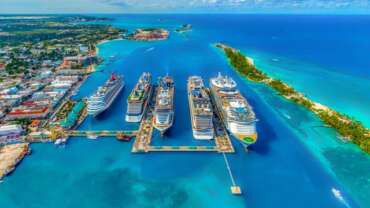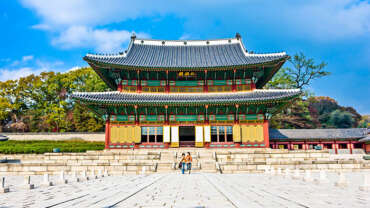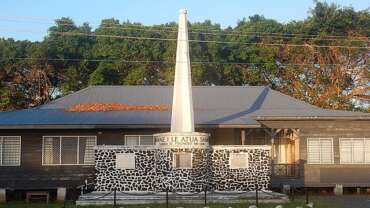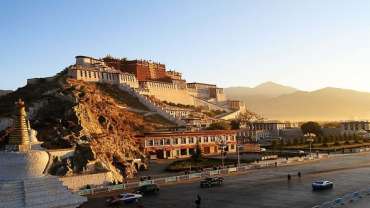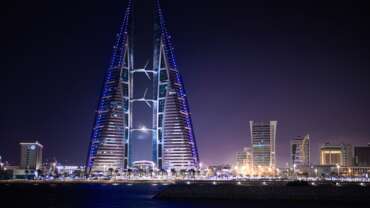Italy - Made in Italy
Italy, a European country with a long Mediterranean coastline, has left a powerful mark on Western culture and cuisine. Its capital, Rome, is home to the Vatican as well as landmark art and ancient ruins. Other major cities include Florence, with Renaissance masterpieces such as Michelangelo’s “David” and Brunelleschi’s Duomo; Venice, the city of canals; and Milan, Italy’s fashion capital.
Italy, like every country, has its uses and traditions that make it unique in its kind, which you must take into account.
Italy is one of the dream destinations to visit at least once in a lifetime. Among works of art of inestimable value and priceless, architecture of any age, traditional food and fabulous wines is the most cultural country par excellence. All the cities of the Belpaese have traces of any historical period: lose yourself in the splendours of the antiquity of Rome or enjoy with the vivacity of Naples, passing through the history of Florence and Venice, up to the more European Milan.
But Italy, like every country, has its uses and traditions that make it unique in its kind, which you must take into account. So if you’re ready to experience Italian beauty, here’s what you need to know about your first trip to Italy.
History of Italy
Italy in the early Middle Ages
The Roman Empire was an international political system in which Italy was only a part, though an important part. When the empire fell, a series of barbarian kingdoms initially ruled the peninsula, but, after the Lombard invasion of 568–569, a network of smaller political entities arose throughout Italy. How each of these developed—in parallel with the others, out of the ruins of the Roman world—is one principal theme of this section. The survival and development of the Roman city is another. The urban focus of politics and economic life inherited from the Romans continued and expanded in the early Middle Ages and was the unifying element in the development of Italy’s regions.
The late Roman Empire and the Ostrogoths
The military emperors of the late 3rd century, most notably Diocletian (284–305), reformed the political structures of the Roman Empire. They restructured the army after the disasters of the previous 50 years, extensively developed the civil bureaucracy and the ceremonial rituals of imperial rule, and, above all, reorganized and enlarged the tax system. The fiscal weight of the late Roman Empire was heavy, given the resources of the period: its major support, the land tax, collected by local city governments, took at least one-fifth, and probably one-third, of the agricultural produce. On the other hand, the administration and the army that the tax system paid for reestablished a measure of stability for the empire in the 4th century. Central government was not always stable; there were several periods of civil war in the 4th century, notably in the decade after Diocletian’s retirement and in the years around 390. But succession disputes had been a normal part of imperial politics since the Julio-Claudians in the 1st century CE; in general, self-confidence in the 4th-century empire was fairly high. Aggressive emperors such as Valentinian I (364–375) could not have imagined that within a century nearly all of the Western Empire was to be under barbarian rule. Nor was this lack of a sense of doom a simple delusion; after all, in the richer Eastern provinces the imperial system held firm for many centuries, in the form of the Byzantine Empire.
Fifth-century political trends
The Germanic invasions of the years after 400 did not, then, strike at an enfeebled political system. But in facing them, ultimately unsuccessfully, Roman emperors and generals found themselves in a steadily weaker position, and much of the coherence of the late Roman state dissolved in the environment of the continuous emergencies of the 5th century. One of the tasks of the historian must be to assess the extent of the survival of Roman institutions in each of the regions of the West conquered by the Germans, for this varied greatly. It was considerable in the North Africa of the Vandals, for example, as Africa was a rich and stable province and was conquered relatively quickly (429–442); it was more limited in northern Gaul, a less Romanized area to begin with, which experienced 80 years of war and confusion (406–486) before it finally came under the control of the Franks. In Italy the 4th-century system remained relatively unchanged for a long time. The government of the Western Empire, which was permanently based at Ravenna after 402, became progressively weaker but remained substantially intact. While the Germanic king Odoacer ruled Italy after 476, the peninsula was not conquered by a Germanic tribe until the Ostrogothic invasion in 489–493. Although the peninsula had faced invasions, such as those of Alaric the Visigoth in 401–410, Italian politics continued during the 5th century to be those of the Roman Empire. This meant, in the context of the military crisis of the period, a continual struggle between civil and military leaders, with the emperors themselves more or less pawns in the middle.
The careers of three of these leaders serve as examples of 5th-century political trends. Aetius controlled the armies of the West between 429 and his murder in 454; he was the last man to be active in both Italy and Gaul, as a Roman senatorial leader of a barbarian army that was Germanic, Hunnic, or both. His career was typical of those in the military tradition of Roman politics, and, had his life not been cut short, he might well have become emperor. The makeup of his army was, however, already significantly different from that of Diocletian or Valentinian, and its growing number of non-Roman military detachments tended increasingly to have their own ethnic leaders and to be organized according to their own rules. Ricimer (in power 456–472, by this time only in Italy) was a Germanic tribesman, not a Roman. He was culturally highly Romanized and, as such, was himself part of a tradition of Romano-Germanic military leadership that went back to the 370s, but he could not, as a “barbarian,” be emperor, and he made and unmade several emperors in a search for a stable ruler who would not undermine his own power. Significantly, in 456–457 and 465–467 he ruled alone, subordinate only to the Eastern emperor in Constantinople. Odoacer was militarily supreme from 476 to 493. In a coup in 476 he replaced the last ethnic-Roman military commander, Orestes, and deposed Orestes’ son, Romulus Augustulus, the child emperor and the last of the Western emperors. Odoacer pushed Ricimer’s politics to its logical conclusion and ruled without an emperor except for the nominal recognition of Constantinople as supreme authority. Odoacer, however, did not merely call himself patricius—local ruler for the Eastern Empire—but also rex—king of his Germanic army of Sciri, Rugians, and Heruls. To what extent he was a military commander of a Roman army as opposed to being a German “tribal” leader was by now impossible to tell. Nonetheless, he, like Ricimer, was an effective defender of Italy against invaders for a long time.
The Ostrogothic kingdom
Theodoric, king of the Ostrogoths, conquered Italy and killed Odoacer in 493. The decades of the Ostrogothic kingdom in Italy (493–552) can be seen as the first true period of Germanic rule in the peninsula, for an entire tribe of 100,000 to 200,000 people came with Theodoric. Still, the Ostrogothic kingdom continued to operate inside a largely Roman political system. Like Odoacer, Theodoric courted the Roman aristocracy, both the civil administrators at Ravenna and the great landowners who made up the Senate at Rome. He needed them to run a still largely functioning tax system, which continued, in part, to pay for the army, though the latter was now entirely Ostrogothic. Roman law remained the basis of political and civil life except for the Ostrogoths, who continued to observe their own customary laws and practices. Theodoric, who did not want the Ostrogoths to become Romanized, encouraged them to keep their distance from the Romans. Yet such apartheid did not last. Some Romans joined the army; many more Goths became landowners, legally or illegally, and adopted civilian Roman cultural traditions.
Theodoric’s rule was probably the most peaceful and prosperous period of Italian history since Valentinian, but a decade after his death Italy was already in ruins. Theodoric himself had fallen out with an important, traditionalist senatorial faction and had executed several senators, including the philosopher-politician Boethius in 524; the Roman elites looked increasingly to Constantinople as a result. The Goths began to split between factions representing more-Roman or more-Germanic cultural traditions; when the latter faction murdered Theodoric’s daughter and successor, Amalasuntha (regent 526–534; queen 534–535), a crisis began that was to end the kingdom.
The end of the Roman world
The Eastern emperors in Constantinople regarded themselves as the legitimate rulers of the West, including Italy, after 476; both Odoacer and, for a time, Theodoric had recognized them, and they had strong links with the Roman Senate. In 533–534 Belisarius, general for the Eastern emperor Justinian I (527–565), conquered Vandal Africa; Amalasuntha’s death was the necessary excuse to invade Italy. Belisarius arrived in Sicily in 535, and by 540 he had fought his way north to Ravenna. The Ostrogothic king Witigis (536–540) surrendered to him. The Gothic armies of the north, however, elected new kings, and Totila (541–552), the most successful of them, kept the war going throughout the peninsula until his death in battle.
The Gothic wars were a disaster for Italy; almost no region was untouched by them. Together with the subsequent wars of the Lombard conquest (568–605), they mark the end of the Roman world there. In the 550s and the early 560s, however, the Eastern (thenceforth, Byzantine) Empire succeeded in reestablishing its political order in Italy, and in 554 Justinian issued the Pragmatic Sanction setting forth its terms: Italy was made a province of the Byzantine Empire, with its capital still at Ravenna (Sicily, Sardinia, and Corsica, however, were to remain administratively separate), and the Ostrogothic political system was to be dissolved. Indeed, the Ostrogoths virtually vanished as a people from then on; it is assumed they were absorbed into the Roman population or into that of the Lombards.
Lombards and Byzantines
In 568–569 a different Germanic tribe, the Lombards, invaded Italy under their king, Alboin (c. 565–572). They came from Pannonia (modern western Hungary), which had itself been a Roman province. Exactly how Romanized they were is a matter of dispute, but they certainly did not have the political coherence of the Ostrogoths, and they never conquered the whole of Italy. Alboin took the north but was soon murdered, probably with Byzantine connivance. His successor, Cleph (572–574), was murdered as well, and for a decade (574–584) the Lombards broke up into local duchies with no king at all. The Byzantines seem to have been partially responsible for this too; at that time they did not have the military capacity to drive the invaders back, and it was easier for them to divide the Lombard leadership and buy some of them into the Byzantine camp. For the rest of the century, even after the reestablishment of Lombard kingship under Authari (584–590) and then Agilulf (590–616), nearly as many Lombard leaders seem to have been fighting with the Byzantines as against them. In 584, in the face of Frankish invasions from beyond the Alps, the Lombard dukes met and elected Authari king, ceding him considerable lands; in the process, Agilulf managed to unify the duchies of the north into a single kingdom. But the confusion of the first decades of the Lombard kingdom did not favour the development of a coherent political system, and, when the wars stopped in 605, Italy was divided into several pieces with boundaries that were in some cases to survive for centuries.
The largest of these pieces was the Lombard kingdom of northern Italy and Tuscany. By the 620s its capital was at Pavia, which remained the capital of the north until the 11th century; other major centres were Verona, Milan, Turin (Torino), Lucca, and Cividale, the capital of the duchy of Friuli. Friuli played an important role as the Italian frontier against the Avars, a powerful military confederation of Central Asian origin that had taken over Pannonia. The two great southern duchies of the Lombards, Spoleto in the central Apennines and Benevento in the mountains and plains of the south, are best considered independent states; they were not connected to the Lombard kingdom geographically and seem to have developed separately, as territories conquered in the 6th century by Lombard detachments originally in some sense under Byzantine control. They were part of the same political structure as the north only for brief periods, most notably the 660s and the 730s–760s.
Byzantine Italy was nominally a single unit, but it too in reality fell into several separate pieces. Its political centre was Ravenna, which was ruled by a military leader appointed from Constantinople and called exarch from about 590. Exarchs were changed quite frequently, probably because military figures far from the centre of the empire who developed a local following might revolt (as happened in 619 and 651) or else turn themselves into autonomous rulers. But the impermanence of the exarchs made it easier for their local subordinates to gain some measure of autonomy. The duke of Naples, the largest city of the south, was effectively independent by the 8th century, as was the duke of the newly formed lagoon city of Venice. The most important of these local rulers, however, was the pope, the bishop of Rome, for Rome remained the largest city of Italy and its bishop, in theory the spiritual head of the whole of Latin Christendom, had considerable status. Rome had dukes too, but they did not have the local support the popes had, and they remain shadowy figures. The popes, on the other hand, had a political position that in practice equaled that of the exarchs and lasted a great deal longer. In the far south, Sicily remained administratively separate from Ravenna, as did Sardinia, which followed its own path under increasingly independent “judges” in almost total obscurity until the Pisan and Genoese invasions of the 11th and 12th centuries. The Lombards of Benevento took Apulia (now Puglia) from the Byzantines, except for Otranto at its southern tip, in the late 7th century; southern Calabria remained under Byzantine control and was Greek-speaking by the 10th century.
The Lombard kingdom, 584–774
King Authari ensured the survival of the Lombards, threatened as they were by both the Byzantines and the Franks. The last Frankish invasion, in 590, probably resulted in some sort of Frankish supremacy; the Lombards payed tribute, at least for a time, and sent detachments to fight in the Frankish army as late as the 620s. King Agilulf reorganized the kingdom and suppressed several dukes with pretensions to autonomy. He also concluded a treaty with the Byzantines in 605 that established permanent borders with the exarchate, which scarcely changed over the next century (the only major exception being the Lombard conquest of the Ligurian coast in the early 640s). Agilulf also seems to have reorganized the central government with the help of Roman administrators, and indeed he imitated or reestablished some late Roman and Byzantine court rituals; he did not, however, exact the land tax and must have lived mostly off his substantial royal estates.
Agilulf seems to have been a pagan in his personal religion, though he may have been an Arian Christian; there were certainly many Arians among the Lombards, including most of the kings between 568 and 652. His wife and son were, however, Catholic, and Catholics were common among the Lombards as a whole from at least the 590s as well. Germanic peoples had often been Arians in the 5th and 6th centuries (the Ostrogoths were, for example), but the Lombards seem to have been less committed to Arianism than were the Goths or the Vandals, and they abandoned it without documented struggle in the mid-7th century. Although the Lombards do not in any case seem to have been religious fanatics, it may well have been Agilulf who laid the basis for a peaceful conversion of his people to Catholicism, owing to his careful cultivation of links to Catholic figures such as Pope Gregory I (despite his wars with Rome) or to the Irish missionary Columban, who founded the monastery of Bobbio, near Pavia, about 612.
For the political history of the Lombards, scholars rely primarily on one source, Paul the Deacon’s History of the Lombards, written in the 790s. For the reigns of Agilulf and his predecessors, Paul’s information is in part contemporary, for it is based on a lost historical work by Secundus of Non, one of the Romans at Agilulf’s court. Secundus’s work, however, seems to have ended after 616, and Paul’s knowledge—and thus posterity’s—becomes much more fragmentary. Paul says little, for example, about Rothari (636–652) except that he was militarily successful (it was he who conquered Liguria) and, most importantly, that he was the first king to set out Lombard custom, in his Edict of 643, a substantial law code that survives independently. It is evident, however, that the basic institutions of the kingdom were by then fairly stable. Between 616 and 712 the Bavarian dynasty—the family of Agilulf’s wife, Theodelinda—dominated the succession; kings who were not members of this family, such as Rothari and Grimoald of Benevento (662–671), married into it. Grimoald was the only southern duke to claim the throne of Pavia; like Rothari, he fought the Byzantines and made laws. Male-line Bavarian kings such as Perctarit (661–662, 672–688) and his son Cunipert (680–700) preferred peace and seem to have developed the ceremonial role of the royal court. This contrast may have represented a real political difference, but, if so, it was only a difference of emphasis. Every king accepted the cornerstones of the Lombard political tradition: Agilulf’s Romanized court and Rothari’s Lombard law.
Coups dominated the Lombard political succession, like that of the Visigoths in Spain, and between 700 and 712 these became particularly savage, resulting in the end of the Bavarian dynasty. Liutprand (712–744) reestablished peace; he is generally regarded as the most successful Lombard king. He issued a series of laws, as a conscious and well-organized updating of Rothari’s Edict, which introduced a fair amount of Roman law into the Lombard system. He also waged war on the Byzantine exarchate and the southern duchies alike. The duchies of Spoleto and Benevento had, as noted, maintained their independence and their separate political traditions. Liutprand conquered the southern duchies in the 730s, setting up his own dukes in both; by his death, Spoleto (though not Benevento) was stably in Pavia’s orbit. He also took about half the land controlled by the exarch and occupied Ravenna itself, temporarily, in 743. His attitude toward Rome is less clear; he took some papal territory but never threatened the city itself. During Liutprand’s reign the Lombard king, for the first time since 568, was militarily dominant in the peninsula. He seems, however, to have still accepted the right of the exarch and the pope to an independent existence.
Aistulf (749–756) followed Liutprand’s policies to their logical conclusion: he conquered Ravenna in 751, ending the exarchate; he ruled in Spoleto without a duke from 751 to 756; and in 752 he began to move on Rome, demanding tribute from the pope. But times had changed for the Lombards. In the 740s the popes had become close to the rising Carolingian dynasty in Francia, and in 751 its head, Pippin III, was recognized as king of the Franks by Pope Zacharias (741–752). Faced with Aistulf’s attacks, Zacharias’s successor, Stephen II (752–757), went to the Franks and sought their military support. In 754 and again in 756, Pippin invaded Italy and defeated Aistulf; he took Ravenna from the Lombard king and gave it directly to the pope, notwithstanding protests both from Byzantium and from the inhabitants of Ravenna itself. This pattern was to persist. Aistulf’s successor, Desiderius (757–774), allied himself by marriage with the Franks and kept control of the southern duchies. But when he too threatened Rome in 772–773, the Frankish king, Charlemagne, invaded and this time conquered the Lombard kingdom outright (773–774). Italy became absorbed into the Carolingian lands right down to the border of Benevento, which remained independent.
Popes and exarchs, 590–800
The Byzantine lands in Italy were, in theory, only provinces of the empire of Constantinople and to that extent do not have much of an independent political history. Although Ravenna often found itself politically opposed to Constantinople, few exarchs made a permanent impression. The most consistent local political tradition was probably that of the archbishops of Ravenna, who were rich and powerful and, like their counterparts in Rome, had a considerable role in the civil administration.
It was in this context that the popes gradually increased their secular authority. The exarchs did relatively little to defend Rome, which was largely cut off from Ravenna by the Lombard states; the papal city thus had to develop its own political institutions. In the late 6th century, responsibility for feeding the population of Rome and, by the 590s, for defending it from the Lombards (both of Pavia and Spoleto) slowly shifted from the fast-disintegrating Roman Senate to the popes, who themselves still tended to come from senatorial families. Gregory I (the Great; 590–604) was the most important of these, and, thanks to his own extensive theological writings and collection of letters, his papacy is by far the best-documented of this period. In the course of the 7th century, his successors slowly detached themselves from the power of the exarchs, and by about 700 they could successfully defy any attempt from Ravenna to remove them. This also meant that they had gained autonomy from the more distant authority of the Byzantine emperor, with whom they were also often in religious disagreement. Pope Martin I could in 653 still be arrested for such disagreement (he died in exile in the East in 655), but not his successors. This autonomy became particularly important in the 730s, because Emperor Leo III (717–741) was an iconoclast (i.e., opposed to religious images, or icons), and the popes were firmly opposed to iconoclasm. The emperor confiscated papal rights in southern Italy and Sicily from Rome for the popes’ defiance, but he could not remove a pope. From then on, however, the Byzantine army no longer helped the popes, who were increasingly reliant on their lands in the Campagna (now part of Lazio) around Rome for food and military support. It was in this context that the popes began to look to the Franks for help against the Lombards. But the popes were also, in the face of nothing but hostility from Byzantium, beginning to think for the first time in terms of their own practical independence.
This came to fruition when the popes gained control over Ravenna itself after 756. By 774, when Charlemagne conquered northern and central Italy, Pope Adrian I (772–795) had extensive territorial designs in the peninsula. Yet these came to nothing, and indeed Adrian and Pope Leo III (795–816) found Charlemagne a far more intrusive patron than the Byzantines had ever been. But the popes kept control of the Campagna, and the belt of papal lands between Rome and Ravenna remained intact as well; the Papal States, as reconstituted by the late-medieval popes, reproduced almost exactly the boundaries of the former exarchate.
People of Italy
Ethnic groups
Italians cannot be typified by any one physical characteristic, a fact that may be explained by the past domination of parts of the peninsula by different peoples. The Etruscans in Tuscany and Umbria and the Greeks in the south preceded the Romans, who “Latinized” the whole country and maintained unity until the 5th century. Jews arrived in Italy during the Roman Republic, remaining into present day. With the collapse of the Roman Empire in the West, Italy suffered invasions and colonization, which inevitably affected its ethnic composition. With some exceptions, the north was penetrated by Germanic tribes crossing the Alps, while the south was colonized by Mediterranean peoples arriving by sea. The Byzantines were dominant in the south for five centuries, coinciding with the supremacy of the Lombards (a Germanic tribe) in Benevento and other parts of the mainland. In the 9th century Sicily was invaded by the Saracens, who remained until the Norman invasion in the early 11th century. The Normans were succeeded by the Aragonese in 1282, and in 1720 Sicily came under Austrian rule. This mixed ethnic heritage explains the smattering of light-eyed, blond Sicilians in a predominantly dark-eyed, dark-haired people.
Except for the Saracen domination, the Kingdom of Naples, which formed the lower part of the peninsula, had a similar experience, whereas the northern part of Italy, separated from the south by the Papal States, was much more influenced by the dominant force of the Austrians. The Austrian admixture, combined with the earlier barbarian invasions, may account for the greater frequency of light-eyed, blond Italians originating in the north. The ethnic mixing continues to the present day. Since the 1970s, Italy has been receiving immigrants from a number of less-developed countries. A predominantly female migration from the Philippines and other Asian countries compares with a predominantly male influx from North Africa. With the accession of numerous former Soviet-bloc countries to the European Union in 2004 and 2007, immigration from eastern Europe soared. In the early 21st century about five million foreigners—roughly half of them from eastern Europe—resided on Italian territory. As post-Arab Spring revolutions plunged parts of the Middle East and North Africa into violence, Italy received hundreds of thousands of refugees, many of whom had undertaken the treacherous Mediterranean crossing.
Languages
Standard Italian, as a written administrative and literary language, was in existence well before the unification of Italy in the 1860s. However, in terms of spoken language, Italians were slow to adopt the parlance of the new nation-state, identifying much more strongly with their regional dialects. Emigration in the late 19th and early 20th centuries played an important role in spreading the standard language; many local dialects had no written form, obliging Italians to learn Italian in order to write to their relatives. The eventual supremacy of the standard language also owes much to the advent of television, which introduced it into almost every home in the country. The extremely rich and, hitherto, resilient tapestry of dialects and foreign languages upon which standard Italian has gradually been superimposed reveals much about Italy’s cultural history. Not surprisingly, the greatest divergence from standard Italian is found in border areas, in the mountains, and on the islands of Sicily and Sardinia.
Only a few languages spoken in limited geographic areas enjoy any legal protection or recognition. These are French, in Valle d’Aosta; German and the Rhaetian dialect Ladino in some parts of the Trentino–Alto Adige; Slovene in the province of Trieste; Friulian (another Rhaetian dialect) and Sardinian, spoken by the two largest linguistic minorities in Italy, received official recognition in 1992. Linguistic minorities persisting in the Alps are, broadly speaking, the result of migratory movements from neighbouring countries or changes in the borderline. The French and Franco-Provençal spoken in Valle d’Aosta date from union with Savoy, but the German spoken in the same area dates from the 12th-century emigration of German sheepherders from the upper valleys of the Rhône.
The German spoken in the Trentino–Alto Adige dates back to Bavarian occupation in the 5th century, whereas that spoken in the provinces of Verona and Vicenza dates from a more recent colonization in the 12th century. Some of the Alpine areas have such a complex linguistic makeup that precise measurement of linguistic communities is impossible. In Friuli–Venezia Giulia, for example, many communes are bi-, tri-, and even quadrilingual, as in the case of Canale, where Slovene, Italian, German, and Friulian coexist. In certain Occitan-speaking parts of Piedmont, Italian is the official language, Occitan is spoken at home, and the Piedmontese dialect is used in trading relations with people from lowland areas. Farther south, in Abruzzo, Basilicata, Calabria, Puglia, and Sicily, isolated linguistic communities persist against the odds. A dialect of Albanian known as Arbëresh is spoken by the descendants of 15th-century Albanian mercenaries; Croatian, the smallest minority language, spoken by some 2,000 people, has survived in splendid isolation in Campobasso province in Molise; and Greek, or “Grico” (of uncertain origin), may be heard in two areas in Calabria and Puglia. Catalan, too, has survived in the town of Alghero in the northwest of Sardinia, dating from the island’s capture by the crown of Aragon in 1354.
Religion
Roman Catholicism has played a historic and fundamental role in Italy. It was the official religion of the Italian state from 1929, with the signing of the Lateran Treaty, until a concordat was ratified in 1985 that ended the church’s position as the state religion, abolished compulsory religious teaching in public schools, and reduced state financial contributions to the church. More than four-fifths of the population declare themselves Roman Catholics, although the number of practicing Catholics is declining. An estimated 450,000 people worship in the Protestant church, including Lutherans, Methodists, Baptists, and Waldensians. They are all members of the Federation of Evangelical Churches in Italy (Federazione delle Chiese Evangeliche in Italia) founded in 1967. Albanian communities in two dioceses and one abbey in the Mezzogiorno practice the Eastern Orthodox rite. Migration that began in the latter third of the 20th century brought with it many people of non-Christian religious beliefs, significantly Muslims, who number more than one million. The Jewish community fluctuated between 30,000 and 47,000 throughout the 20th century. In 1987 Jews obtained special rights from the Italian state allowing them to abstain from work on the Sabbath and to observe Jewish holidays.
Traditional regions
Italy is divided into 20 administrative regions, which correspond generally with historical traditional regions, though not always with exactly the same boundaries. A better-known and more general way of dividing Italy is into four parts: the north, the centre, the south, and the islands. The north includes such traditional regions as Piedmont, which is characterized by some French influence and was the seat of united Italy’s former royal dynasty; Liguria, extending southward around the Gulf of Genoa; Lombardy, which has long been noted for its productive agriculture and vigorously independent city communes and now for its industrial output; and Veneto, once the territory of the far-flung Venetian empire, reaching from Brescia to Trieste at its greatest extent. The centre includes Emilia-Romagna, with its prosperous farms; the Marche, on the Adriatic side; Tuscany and Umbria, celebrated for their vestiges of Etruscan civilization and Renaissance traditions of art and culture; Latium (Lazio), which contains the Campagna, whose beautiful hills encircle the “Eternal City” of Rome; and the Abruzzo and Molise, regions of the highest central Apennines, which used to support a wild and remote people. The south, or Mezzogiorno, includes Naples and its surrounding fertile Campania; the region of Puglia, with its great plain crossed by oleander-bordered roads leading to the low Murge Salentine hills and the heel of Italy; and the poorer regions of Basilicata and Calabria. On the islands of Sicily and Sardinia are people who take pride in holding themselves apart from the inhabitants of mainland Italy. However, the south and the islands have changed a great deal since about 1960 and have become more modernized. Within these four main divisions, the variety of the much smaller traditional districts is very great and depends on history as well as on topography and economic conditions.
Cultural Life of Italy
Cultural milieu
The 20th century saw the transformation of Italy from a highly traditional, agricultural society to a progressive, industrialized state. Although the country was politically unified in 1861, regional identity remains strong, and the nation has developed unevenly as a cultural entity. Many regional differences are lessening with the increasing influence of television and other mass media as well as a nationally shared school curriculum. Though Italians have long tended to consider themselves citizens of their town or city first, followed by their region or province and so on, this is changing as Italy becomes more closely integrated into the European Union (EU) and as Italians come to think of themselves as part of a supranational community made up of many peoples.
Daily life and social customs
Since World War II, Italian society has profoundly changed, with a significant impact on daily life. One of the main elements of change is the more visible role women play in society outside the home, such as increased participation in higher education and the professions. One aspect of this changed role is that Italy records one of the lowest average numbers of children per woman in the world, as well as some of the lowest birth and fertility rates. The declining number of births was a subject of much concern in the first years of the 21st century, and some towns and villages, particularly in the depopulated rural south, were offering cash premiums and tax incentives for newborns. Of equal concern was the concomitant graying of Italy; in 2010 about one-fifth of the population was over age 65.
For Italian families, among the most popular daily leisure activities are watching television, listening to the radio, reading newspapers, and going to the cinema; reading books and engaging in sports are less common among the majority of people. According to surveys, Italians are very satisfied with their family relations, friendships, and health status, while their economic status and their working positions are less satisfactory. This is especially the case in southern Italy, where there are fewer job opportunities and where unemployment is high.
Though the popularity of home and wireless entertainment has grown, the use of public spaces remains important. Young Italians meet friends on a daily basis, often in the cities’ piazzas in the evenings, making frequent trips to bars, cinemas, pizzerias, and discos. Social media Web sites and mobile phones allowed Italians—especially those of younger generations—to maintain ties with friends, but online communication was generally seen as a method to facilitate, rather than replace, face-to-face interaction. Coastal areas are popular destinations in the summer. The automobile retains a strong hold on daily life as well. Ownership levels are high, and many cities and towns suffer severe congestion and pollution as a result.
Food is traditionally a primary element of Italian life. Work patterns in Italy revolve around the midday meal, though the leisurely two-hour-long lunch break is disappearing. Bars and trattorie cater cheaply and quickly to the casual diner. The culinary traditions of Italy proudly bear several ancestries, chiefly Etruscan, Greek, and Saracen: to the Etruscans is owed the heavy use of grain, to the Greeks the widespread presence of herb-cooked fish, and to the Saracens the country’s love of pastries, rice, and citrus fruits. Although there is no one style of Italian cooking, there being a wide variety of regional differences, Italians everywhere share a love of noodles, and pastas bear such euphonious names as spaghetti (“little strings”), penne (“feathers”), macaroni (“little dear things”), and orecchiette (“little ears”). In the south, noodles are often dressed with sauces made of olive oil, tomatoes, and spices. In the north, especially in Piedmont, they are coated in cream, butter, and cheese. Many foreigners have grown accustomed to these regional variations, as Italian cuisine has become a popular cultural export.
International dishes such as pasta and pizza and ingredients such as olive oil are popular back home in Italy, of course, but Italian cuisine remains characterized by strong regional traditions, local geography, way of life, and history. Northern Italian gastronomy is well known for its use of butter, rice, polenta, and cheeses. Seafood and shellfish are prevalent on the coasts. Meat dishes are popular in central Italy; for instance, wild boar is cooked in Tuscany and Umbria. The south is renowned for citrus fruits, olive groves, and vineyards. Italy is also one of the world’s largest wine producers, and every region in Italy is known for wine—to name just a few, Barbera and Barolo in Piedmont, Valpolicella and Soave in Veneto, Chianti in Tuscany, Primitivo in Puglia, Cirò in Calabria, and Marsala in Sicily.
For most Italians in the 21st century, religious activity plays a much smaller role in daily life than it did in the prior century and is usually concentrated on Sundays or on special celebrations such as Christmas and Easter. However, older generations, especially in rural settlements, tend to be more involved and may attend mass every day.
Regional life in Italy is typified by a diversity of customs and a great variety of festivals, even if it is their appeal to the tourist industry and to television that helps keep them alive. The majority of religious festivals are Roman Catholic, dedicated to the Madonna or to different saints. The feast of the Epiphany on January 6 exemplifies religious diversification as well as the pagan elements present in some of these celebrations. Traditionally, a witch called the Befana brings gifts to children on this day. However, in the villages of Mezzojuso and Piana degli Albanesi, both near Palermo, the Epiphany is celebrated according to the Byzantine and Albanian rites, respectively. The most notable Carnival celebrations are held at Viareggio and Venice, where in 1992 they were financed for the first time by major sponsors.
Italy’s strong agricultural tradition gives rise to a multitude of festivals celebrating the harvest, food, country, and seafaring pursuits. These festivals reflect the traditional activities of the area in which they are held. For example, the olive and bruschetta festival at Spello (near Perugia) marks the end of the olive harvest, the fish festival at Termoli reflects the fishing tradition in the port, and the hazelnut festival in Canelli (near Asti) gives testimony to the importance of that local crop. At Senale (near Bolzano) the traditional migration of sheep across the Giorgio glaciers is celebrated, while fishermen in the port of Aci Trezza (near Catania) stage a farcical swordfish hunt every June.
Some festivals are more sporting in nature, such as the historic horse race the Corsa del Palio in Siena, Florence’s “football match” in 16th-century costume, and the regattas of Venice, while others commemorate historical events, such as the Lily Festival at Nola (near Naples), recalling the return of St. Paulinus of Nola in 394 after a long imprisonment in Africa, and the festival of Piedigrotta in Naples, commemorating the battle of Velletri in 1744. The Venice Biennale, established in 1895, convenes every other year to celebrate the visual and performing arts.
The arts
Italy was at the forefront of the artistic and intellectual developments of the Renaissance, which drew their impetus from a reappraisal of the Classical Greek and Roman world. Artists and scholars in Italy were especially well placed to take the lead in such a revival, since they were surrounded by the material remains of antiquity. Earlier Romanesque and Gothic forms in both art and architecture were supplanted by the Renaissance, which escalated with a flourish into the Baroque styles of the 16th century.
Venice: the Elegance of every historic Palace Is reflected In the Water
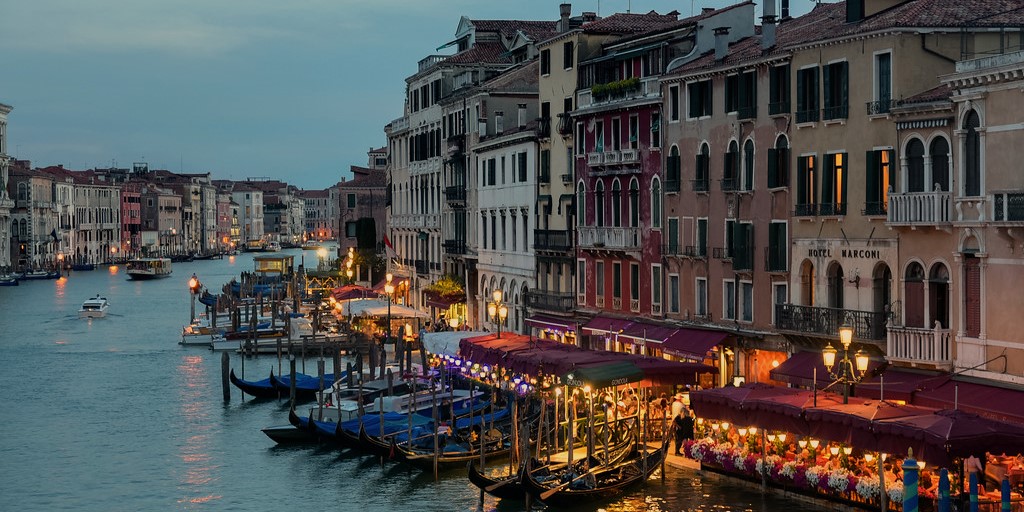
Venice is synonymous with elegance because the details of every historic palace resemble those of the lace reflected in the water. The city of the Doges is mirrored as the vain do, as those who know they have a Beauty that does not fade with time, and the facades of the ancient patrician residences that wind along the canals are witnesses of a priceless history.
LIVING IN VENICE: BETWEEN MAGIC AND LUXURY
Venice is a city that, like no other, can give you the feeling of being a world apart from everything else, and it is easy, strolling through the calli and bridges, to imagine that you belong to a noble family that lived in a marvellous palace during the splendour of the Serenissima. Who knows what it was like to live in luxurious flats with high ceilings and precious objects, servants, parties and formalities dictated by the etiquette of the high society of the time… Choosing between the many beauties that Venice has to offer is a difficult task, but in this article we want to help you give a name and a soul to some of the enchanting buildings that are reflected in the water.




